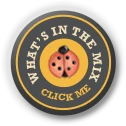The Spring Forager
- By Elizabeth Weinstein
- Reading Time: 5 mins.

Just off one of Washington, D.C.’s busiest interstates, a group of George Mason University students has gathered in a lush nature preserve, armed with collection bags, cameras, and some of the area’s top mushroom hunters. Their mission? Morels—those tasty, elusive, honeycombed beauties that pop up in woods from Oregon to Maryland each spring.
In many areas finding morels—which can run from $40 to $50 per pound at grocers and online retailers—can be a badge of pride, whether you’re a professional mycologist or just a beginner. For those who love the meaty versatility that mushrooms add to dishes, hunting morels in local wooded areas, or even apple orchards, can be a good introduction to basic foraging. But as with any foraged food, collecting mushrooms requires care and, above all, caution before you pop any fungi into your mouth.
“Bingo!” yells one of the students just a few minutes into the foray. Gabriella Petrick, the GMU professor who organized the class trip, hurries over with six other students. Two tiny white morels peek up from under a bed of fall leaves, and the group eagerly snap photos with their mobile phones. The students quickly look for more in the area, since morels tend to grow in clusters.
Want farm-fresh fruit?
We've got you covered.
Petrick, a professor of nutrition, food studies, and history, says foraging is a way to educate students about sustainable food production. But she emphasizes the fine line between responsible foraging and what’s known as the “tragedy of the commons”—over-harvesting land for one’s own needs while ignoring the long-term ramifications. She says ethical questions about foraging as a business and who should have access to it are paramount in her lectures. “This is about how we can use nature in a responsible way and what we can find in a wooded environment,” she says. “How can we be ecologically sound in our relationships with parks and forests?”
Morals for Morels
Like the handful of other edible mushrooms, the students would find over the next two hours—including deer mushrooms and jelly mushrooms—these white morels popped up near elm trees. Morels can also be found under ash, poplar, and cottonwood trees. In the western United States, three types of morels, dubbed “fire morels,” crop up in large quantities the year after a forest fire, then disappear until the next burn. Though estimates vary, morels start growing when the ground temperature reaches 53 to 55 degrees Fahrenheit and stop fruiting when the temperature reaches about 62 degrees.
Britt Bunyard, publisher and editor-in-chief of Fungi Magazine, says habitats for the nearly 30 species of morels mycologists have identified can vary, but unlike most other mushrooms, which prefer dusty, drier environments, morels like it a little wet.
Want farm-fresh fruit?
We've got you covered.
“If the land gets moisture but doesn’t sit in it, that’s a good place for morels,” Bunyard says. “You won’t find morels near standing water. But if you move up a hill from the water, the trees will change and that’s favorable. They’re even found in banks along roads, or trashy, junky areas.”
Back in the woods, several members of the Washington, D.C., Mycological Association who accompanied the GMU students on their trip point out large, orange mushrooms called Chicken of the Woods growing on dead trees. This common, edible variety is freshest in the fall and comes up commonly at the base of old oak trees. But Bruce Boyer, president of the Mycological Association, warns students not to confuse old, dry chicken mushrooms from the previous season with newly grown ones. The old ones taste like sawdust, he says.

For those foragers who aren’t lucky enough to spot morels, Petrick points out an abundance of wild leeks, commonly known as ramps, growing on the forest floor. The students sample the strong, oniony leaves and stuff several stalks into their bags. Wild leeks are found mainly across the eastern United States and grow into the summer. Used sparingly because of their strong flavor, wild leeks can add zest to any dish.
Get tips for your office
Be an office hero!
“You can make an antipasti out of them, grill them, or put them on a pizza,” Petrick says as she carefully pulls up the white bulb at the base of the plant. “You can also cook them with potatoes, but don’t cook them with morels, because it overpowers the flavor.”
Never Put Anything in Your Mouth
Throughout the expedition, Boyer and his fellow mycologists liberally dispense safety tips. Beginning mushroom hunters should always go with someone who knows mushrooms and the woods well. Never put anything in your mouth—whether mushrooms or plants—without positive identification. Clean mushrooms as you collect them, and try to place them in a netted bag so that the mushroom’s spores can disseminate through the woods as you walk.
Bunyard of Fungi Magazine says simply bringing a guidebook into the woods—or trying to identify a mushroom on the Internet—is often confusing and potentially dangerous, since many mushrooms look alike, yet have subtle characteristics that can make the difference between a delicious meal and a trip to the hospital. Each year, more than 9,000 cases of mushroom ingestions are reported to the American Association of Poison Control Centers and 95 percent of those cases result from mushroom misidentification by amateurs. Last year in California alone, more than 1,500 people were poisoned by mushrooms, five of whom died. Bunyard says foragers often think that brightly colored mushrooms indicate toxicity, but that’s a dangerous assumption. The most dangerous mushrooms are often brown or white. The safest ones are red, yellow, orange, or blue, he says.
Get tips for your office
Be an office hero!
“There’s not a sure-fire way to know if a mushroom is poisonous. If you see a deer eating a mushroom, that doesn’t necessarily mean it’s safe for you to eat. Things can be poisonous to us that aren’t poisonous to other animals,” Bunyard says.
Once you’ve positively identified an edible mushroom, the safest preparation is to cook it thoroughly. Boyer, Petrick, and several mycologists on the foraging trip wax poetic about all the ways they prepare morels. Boyer says he makes “stuffers”—morels that are cut in half, stuffed with crab meat, cream, nutmeg, and rum, and baked for 20 to 30 minutes standing up in a base of rock salt. Others say they simply sauté their morels in butter.
Bunyard says his family prefers them fried tempura-style in a deep fryer. Alternatively, morels preserve well, sustaining their earthy, smoky flavor for months after they’re dried. When in doubt, Bunyard says he looks for recipe inspiration from one of his favorite books, “Edible Mushrooms of Illinois and Surrounding States,” which not only provides helpful illustrations on identifying fungi, but also includes delicious recipes by professional chefs.
Want farm-fresh fruit?
We've got you covered.
Elizabeth Weinstein is a freelance journalist based in Alexandria, VA.
Recent Articles
Are Peaches a Citrus? A Farmer Weighs In
Fruit Hybrids, Explained: A Love Story from the Orchard
Subscribe to our Newsletter
"*" indicates required fields





